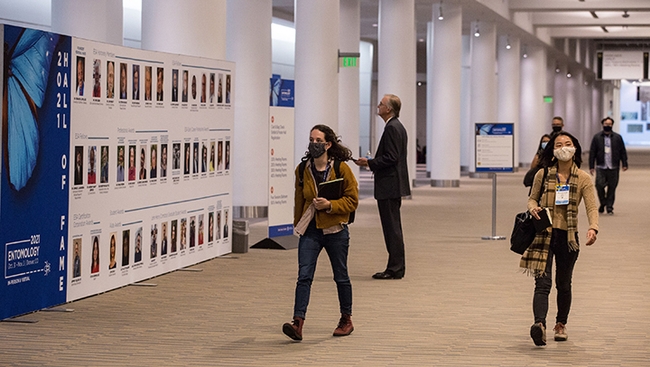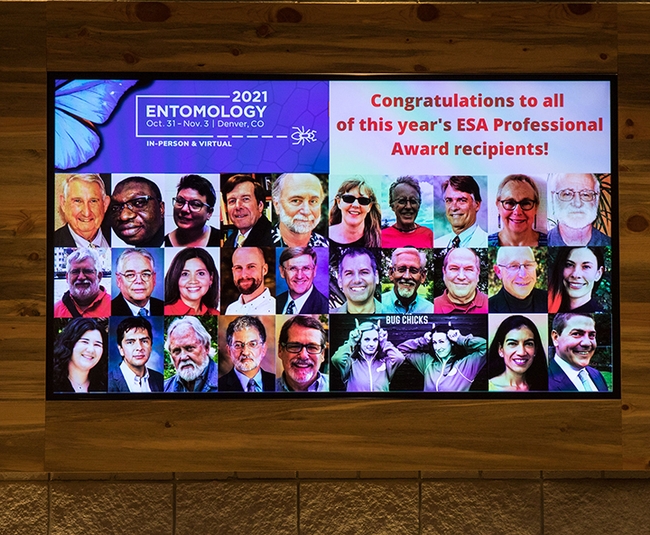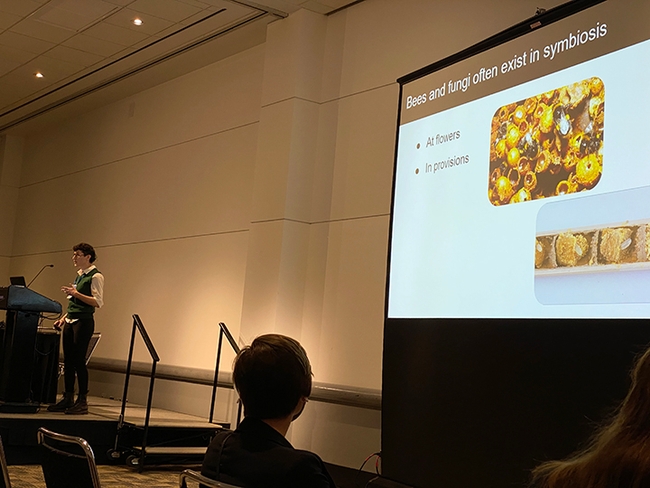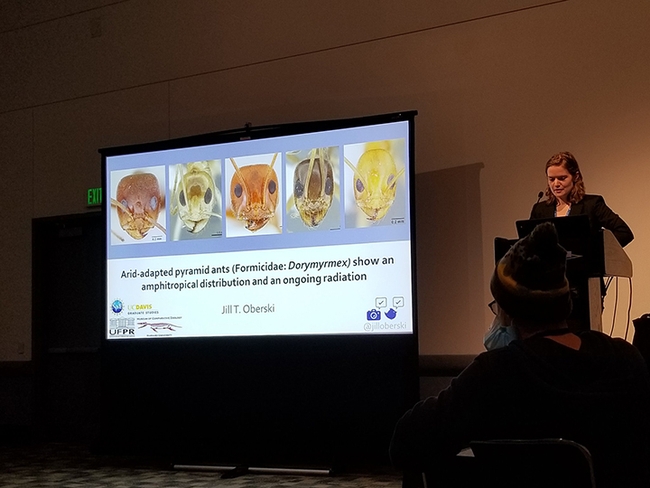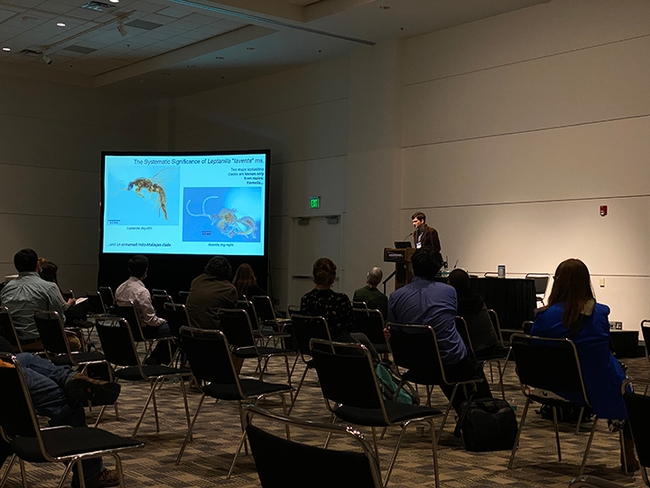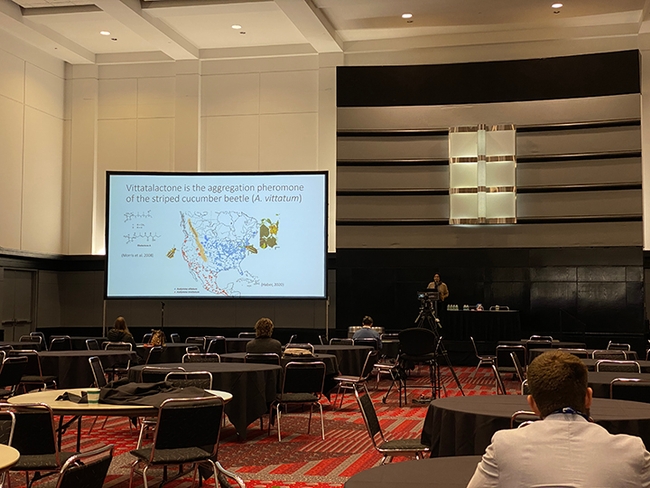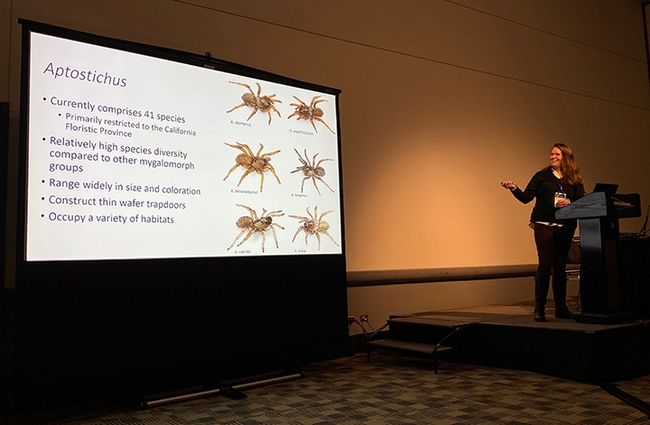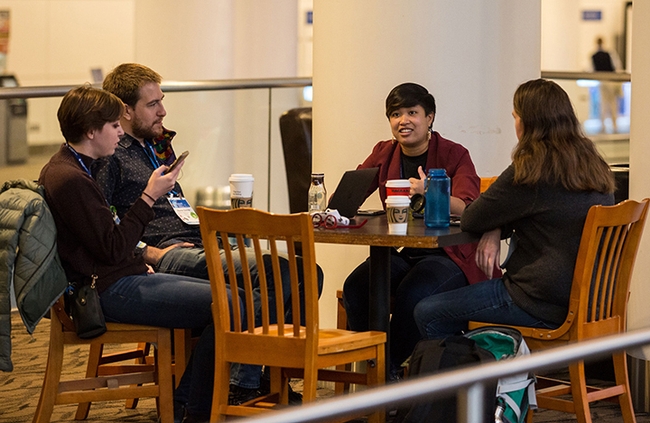- Author: Kathy Keatley Garvey
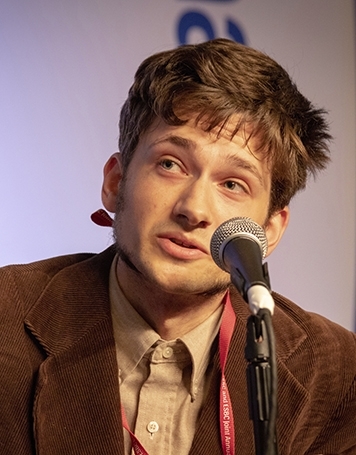
Let The Games begin!
The award-winning UC Davis Entomology Games Team is gearing up for the national competition.
The popular Entomology Games, a lively question-and-answer, college bowl-style competition on entomological facts played between university-sponsored student teams, takes center stage at the annual meeting of the Entomological Society of America (ESA). This year's meeting is set Nov. 13-16 in Vancouver, British Columbia.
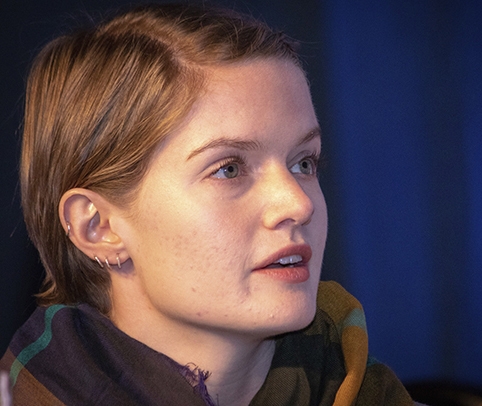
A preliminary round will be held from 1 to 3 p.m., Sunday, Nov. 13 in the West Ballroom of the Vancouver Convention Center. The final round is from 5 to 7 p.m., Tuesday, Nov. 15 at the same site. The event was formerly known as the Linnaean Games.
The UC Davis team defeated the UC Riverside team at the 2022 meeting of the Pacific Branch, Entomological Society of America (PBESA) to advance to the nationals. UC Riverside also will compete in the nationals as the PBESA runner-up. The Pacific Branch encompasses 11 Western states, parts of Canada and Mexico and several U.S. territories.
Some of the questions asked of the teams at the PBESA meeting, held April 10-13 in Santa Rosa:
- Give the binomial name of the new record-holder for millipede with greatest number of legs, along with its country of origin. (Answers: Eumillipes persephone; Australia)
- What is a chemical called that is added to an insecticide that enhances the formulation and efficacy, but is not itself toxic? (Answer: an adjuvant)
- Name the heme containing enzymes that play a role in the detoxification of xenobiotics such as pesticides. (Answer: Cytochrome P450s)
- What is the most prevalent virus affecting humans that is vectored by Aedes mosquitoes? (Answer: Dengue)
In last year's national match, Ka Mea Kolo, an entomology club at the University of Hawaii, defeated Texas A&M to claim the championship. Auburn University won the national championship in 2020, and the University of Florida in 2019.
Since 2015, UC Davis has scored three national championships:
- 2018: The University of California team (UC Davis/UC Berkeley) defeated Texas A&M. Members of the UC Team: captain Ralph Washington Jr., then a UC Berkeley graduate student with a bachelor's degree in entomology from UC Davis; doctoral students Brendon Boudinot, Jill Oberski and Zachary Griebenow of the Phil Ward lab, and doctoral student Emily Bick of the Christian Nansen lab.
- 2016: UC Davis defeated the University of Georgia. Members of the UC Davis team: captain Ralph Washington Jr., Brendon Boudinot and Emily Bick.
- 2015: UC Davis defeated the University of Florida. Members of the UC Davis team: captain Ralph Washington Jr., and members Brendon Boudinot, Jessica Gillung and Ziad Khouri.
The 7000-member ESA, founded in 1889 and located in Annapolis, Md., is the world's largest entomological organization. It is affiliated with educational institutions, health agencies, private industry and government. Members are researchers, teachers, extension service personnel, administrators, marketing representatives, research technicians, consultants, students, pest management professionals, and hobbyists.
Resources:
- Listen to the 2018 Entomology Games (won by the University of California team, comprised of UC Davis and UC Berkeley students), posted on YouTube (audio only, no video)
- Watch the 2016 National Linnaean Games Championship Round (won by UC Davis), posted on YouTube
- Watch the 2015 National Linnaean Games Championship Round (won by UC Davis), posted on YouTube
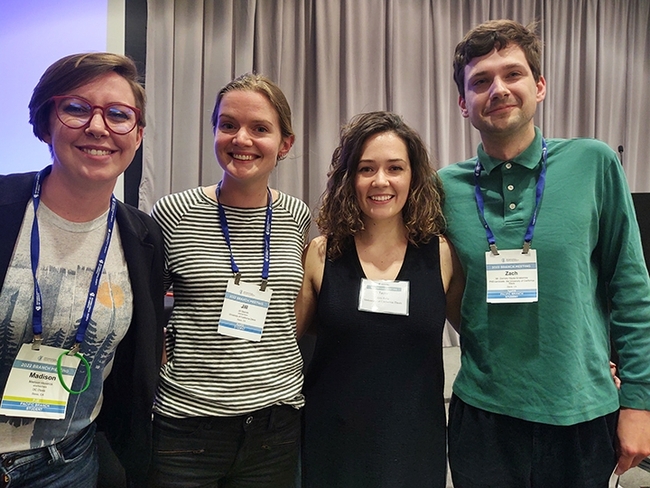
- Author: Kathy Keatley Garvey
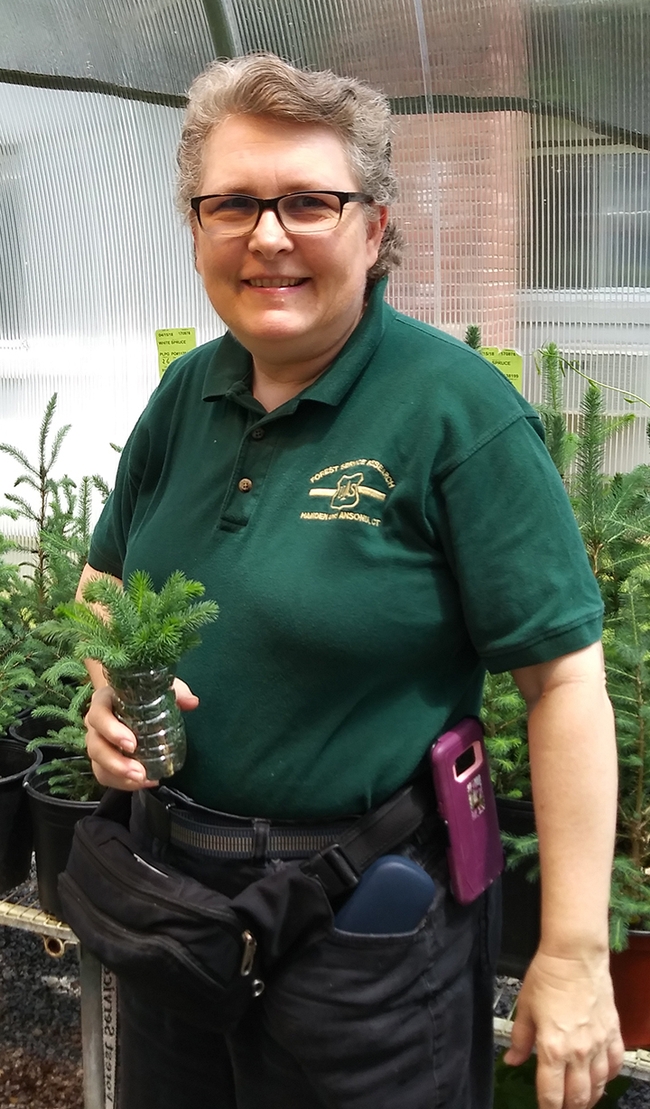
“They eat live insects so I had to find them,” said Keena, who was born in the Los Angeles area but moved at age 4 to Chico and then to Paradise as a teenager. “We fed them any insects we could find, since store-bought were too expensive. We fed them mostly crickets and grasshoppers. I also reared some mealworms at home for the winter.”
An international expert on the biology and behavior of the spongy moth (formerly known as the gypsy moth) and the Asian longhorned beetle, Keena focuses her research on “developing the knowledge and tools needed for exclusion, eradication or control of non-native invasive forest pests and investigating basic biology, behavior, and population genetics,” according to the ESA officials who announced her Honorary Membership.
Keena initially chose to attend UC Davis because of its renowned School of Veterinary Medicine. An entomology course changed her plans. "I had taken a non-majors entomology class and liked it, so I took the first majors course and told myself that if I got an A in it that would be my major. Then I did work study, helping in entomology labs so I was exposed to research. That led me to do the masters to see if research was for me. Obviously, I got hooked on entomology."
Keena holds three degrees in entomology from UC Davis: a bachelor's degree obtained in 1983, a master's, 1985, and a doctorate in 1988. Professor Jeff Granett served as her major professor for both her graduate degrees. A former chair of the department, Granett retired as an emeritus professor in 2006.
At UC Davis, Keena worked on spider mite pesticide resistance management in the almond cropping system. After receiving her doctorate, she headed to Connecticut as a postdoctoral researcher at the University of Connecticut. She's served as a research entomologist with the U.S. Forest Service inHamden since 1992 and is now the lead scientist in the lab.
In a letter of support for her Honorary Member nomination, Frank Zalom, UC Davis distinguished professor, president of ESA in 2014, and an Honorary Member of ESA since 2021, said he has known Keena since 1983 when she "became a graduate student at UC Davis." He also served with her on a number of ESA committees.
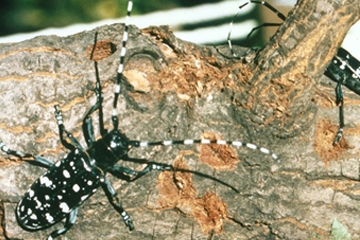
Zalom wrote that "Melody has served the Eastern Branch as member or chair of at least eight of its committees (in many cases multiple times) over the last 30 years....Melody has also taken top leadership roles in ESA Section governance." She was secretary, vice chair, and chair of Section B from 2005-07, and then past president of its successor, the Integrative Physiological and Molecular Insect Systems Section, which is now the Physiology, Biochemistry and Toxicology (PBT) Section. She served as PBT Section's elected Governing Board Representative from 2009-11.
Program Co-Chair of 2014 ESA Meeting. "As an active ESA member and volunteer myself during this time," Zalom wrote, "I was impressed with Melody's outstanding leadership and organizational skills as well as, for lack of a better term, her good ideas." After Zalom's election as ESA vice president-elect, he invited her to become Program Committee co-chair for the 2014 ESA Annual Meeting in Portland, Ore. "I will forever be grateful to Melody that she accepted my invitation. Program Chair is one of the most difficult and time-consuming ESA volunteer positions. It is a three-year commitment as organizer for the student paper competition in the first year, the entire program in the second year, and then the poster competition in the third year. Melody did an exceptional job of organization, and she was the perfect complement to Sue Blodgett who was her co-chair."
Zalom pointed out: "Melody proposed and implemented several new ideas that have been adopted by subsequent ESA program committees including a new program category she called ‘organized meetings' that enabled participants in these frequently held ‘meetings-within-a-meeting' to make presentations that would not be counted against the per person presentation limits. Because of the increasing attendance at ESA Annual Meetings (the 2013 and 2014 annual meetings were the most well-attended annual meetings to that time), it was crucial that a limit on author submission be established, but that it be done in a manner sufficiently flexible to accommodate member networking. Melody's superb organizational skills led to new methods for tracking the student competitions that have since become institutionalized. I attribute the success of the 2014 Annual Meeting to Melody and Sue's enthusiasm, great ideas and superior organization of the program."
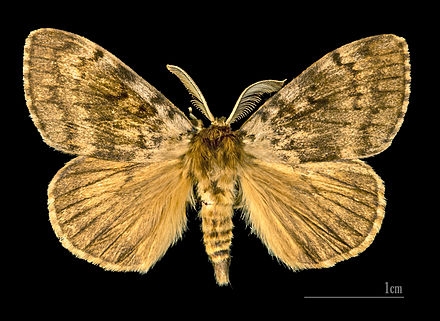
Excerpts from ESA website:
- "Dr. Keena has been an active member of ESA, the Eastern Branch, and the Physiology, Biochemistry and Toxicology Section (formerly Section B, Integrative Physiological and Molecular Insect Systems) for 39 years (for the last 5 years also a member of Plant-Insect Ecosystems Section). She has presented, invited, or contributed talks at 34 ESA Annual Meetings and organized four symposia. She was encouraged by a supervisor to get involved in the Society in the early 1990s and has continued to be involved in one or more ways every year since. In the Eastern Branch she has served on and chaired several Branch committees including employment, finance, registration, auditing, resolutions, program, and student competition. She also served as the elected member-at-large on the Eastern Branch Executive Committee. While serving on the student competition committee, she developed improved judging sheets."
- "Her national committee service includes: membership (1997-99, chair last two years), finance (2002-07), program (2007, 2013-2015, co-chair last year), strategic planning (1999), technology (in 2004 helping premiere the first digital presentations and 2016 for the International Congress of Entomology), honors and awards (2009-11), systematic resources (2001-03), and presidential committees. While serving on the membership committee, she successfully presented proposals to start the family and transitional membership categories to the Governing Board. During her years on the finance committee, the Society went through turbulent times dealing with more than one executive director and the sale of ESA's office building to improve its finances. At the very successful 2015 annual meeting, she and her program co-chair developed the concept of organized meetings for groups regularly meeting with ESA and determined that presentations made in these meetings should not count against the conference presentation limit. As student competition co-chairs in 2014, they developed improved methods for tracking the student competitions. At the Section level, Keena was secretary, vice-chair, chair, and past chair of Section B (2005-08) and was subsequently elected as Governing Board representative (2009-11) for the newly named Physiology, Biochemistry, and Toxicology section during the section reorganization."
- "Dr. Keena served as a member and chair of the editorial board for the Journal of Integrated Pest Management (2011-2015), a physiological ecology subject editor for Environmental Entomology (2015–2019), and is currently co-editor-in-chief for Environmental Entomology (2019-present). As co-editor-in-chief of the journal, she has instituted the annual Reviewer's and People's Choice Awards, improved the diversity of the subject editor pool, overseen the creation of the very successful special collection on the spotted lanternfly, developed a new subject area and updated descriptions of the sections, and took the lead in creating an organized meeting for the journal (along with the Journal of Economic Entomology) at the ESA Annual Meetings where the award winners present an invited talk and the co-editors-in-chief can interact with members about the journals."
- "Throughout her career, Dr. Keena has encouraged many members and students to get involved in the Society, including actively participating in the Women in Entomology breakfasts, and she sees this as a critical part of any successful scientist's role in giving back to the Society and passing on the passion for entomology to the next generation."
Honorary Membership acknowledges those who have served ESA for at least 20 years through "significant involvement in the affairs of the society that has reached an extraordinary level," according to the selection criteria. Candidates are selected by the ESA Governing Board and then voted on by the ESA membership.
This year ESA selected three as Honorary Members. In addition to Keena:
- Walter Soares Leal, UC Davis distinguished professor with the Department of Molecular and Cellular Biology and a former chair of the Department of Entomology (now the Department of Entomology and Nematology) (See UC Davis news story)
- Research entomologist Alvin Simmons of the USDA Agricultural Research Service.
With the addition of UC Davis distinguished professor Leal, ESA has now singled out six UC Davis faculty members as recipients of its highest award. Distinguished professor Frank Zalom received Honorary Member in 2021; Professor W. Harry Lange (1912-2004) in 1990; Professor and 1984 ESA President Donald MacLean (1928-2014), in 1993; Professor Bruce Eldridge in 1996, and Professor John Edman in 2001.
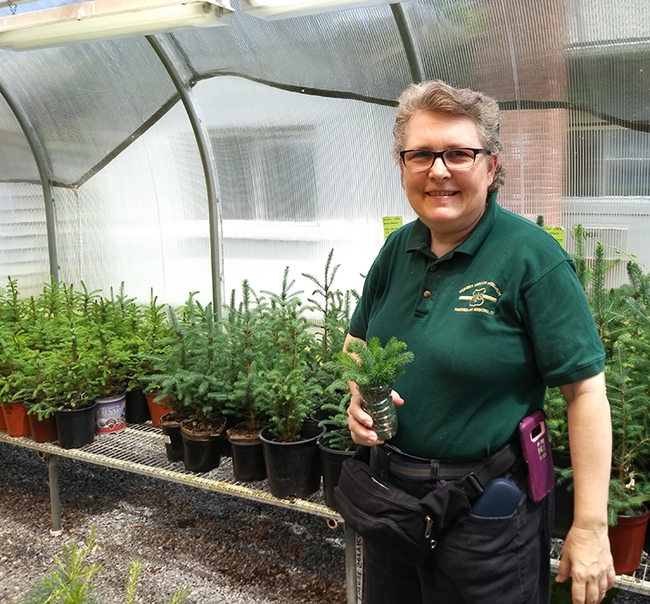
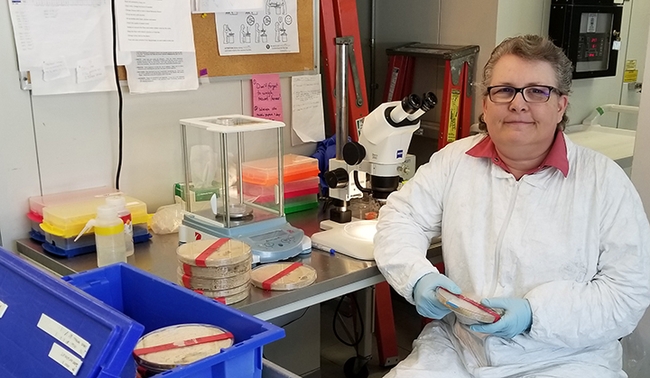
- Author: Kathy Keatley Garvey
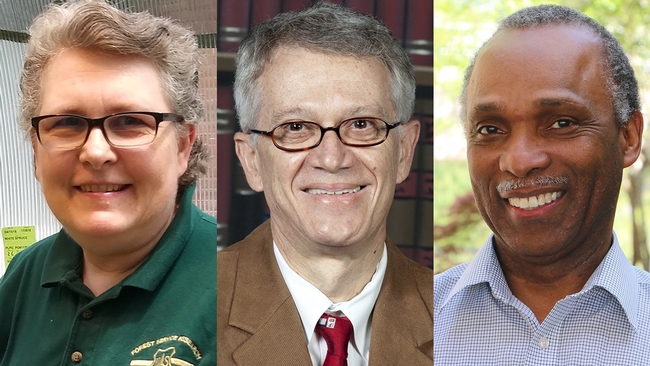
“Honorary Membership acknowledges those who have served ESA for at least 20 years through significant involvement in the affairs of the society that has reached an extraordinary level,” ESA officials said in announcing the three recipients on Aug. 24. “Candidates for this honor are selected by the ESA Governing Board and then voted on by the ESA membership.”
“I am honored and humbled to receive this award,” said Leal, a distinguished biochemistry professor with the Department of Molecular and Cellular Biology and a former chair of the Department of Entomology (now the Department of Entomology and Nematology). “It is truly a highlight of my career.”
Other 2022 Honorary Member recipients are research entomologist Alvin Simmons of the USDA Agricultural Research Service whom Leal fondly calls “my twin brother”; and research entomologist and UC Davis-educated Melody Keena of the U.S. Forest Service.
Leal and Simmons co-chaired the 2016 International Congress of Entomology conference, “Entomology Without Borders,” held in Orlando, Florida, that drew nearly 7000 attendees from 101 countries. It was the largest gathering of entomologists in the history of insect science.
Keena received three UC Davis degrees in entomology: her bachelor's degree in 1983; her master's in 1985, and her doctorate in 1988. (See her website.)
Leal, Simmons and Keena will be recognized during the 2022 Joint Annual Meeting of the Entomological Societies of America, Canada, and British Columbia, Nov. 13-16, in Vancouver.
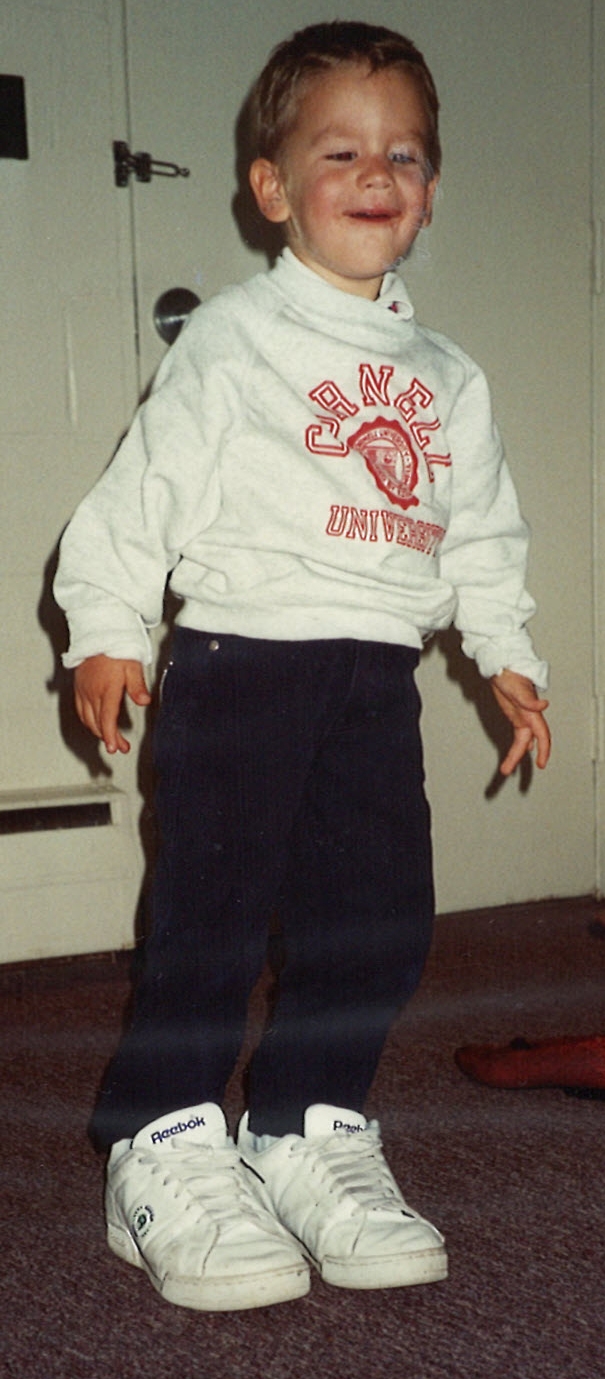
As a leading global scientist and inventor in the field of insect olfaction and communication, Leal was named a 2019 Fellow of the National Academy of Inventors (NAI) for his impact in the fields of molecular, cellular biology, and entomology. (Due to the COVID pandemic, the organization cancelled the 2020 Phoenix ceremony and Leal received the medal in June 2022.)
“When Walter Leal reached UC Davis, he came with the reputation of being a ‘one man army in research,'” said UC Davis distinguished professor Bruce Hammock who received the NAI Fellow award in 2014. Hammock holds a joint appointment with the Department of Entomology and Nematology and the UC Davis Comprehensive Cancer Center. “This reputation was well deserved. I know of no one at UC Davis who matches Walter in taking his remarkable fundamental advances in science and translating them to increase the safety and magnitude of world food production.”
Leal, an expert in insect communication, investigates how insects detect odors, connect and communicate within their species; and detect host and non-host plant matter. His research, spanning three decades, targets insects that carry mosquito-borne diseases as well as agricultural pests that damage and destroy crops. He and his lab drew international attention with their discovery of the mode of action of DEET, the gold standard of insect repellents.
Leal was recently elected chair of the International Congress of Entomology Council, which selects a country to host the congress every four years and which supports the continuity of the international congresses of entomology. Leal succeeds prominent entomologist May Berenbaum of the University of Illinois, Urbana-Champaign, editor-in-chief of the journal, Proceedings of the National Academy of Sciences and a 2014 recipient of the National Medal of Science.
“I have big shoes to fill,” he said.
Federal Grants. For the last 22 years, Leal's research program has drawn support from the National Institute of Allergy and Infectious Diseases of the National Institutes of Health, the United States Department of Agriculture, the National Science Foundation, commodity groups, research agreements, and gifts from various donors.
He has published more than 200 peer-reviewed papers in a variety of entomology and multidisciplinary journals, including the Proceedings of the National Academy of Sciences of the USA (PNAS), Nature, iScience, Journal of Medical Entomology, Insect Biochemistry, and Molecular Biology. His research, with an h-index of 61, has been cited more than 13,500 times.
A native of Brazil, educated in Brazil and Japan, and fluent in Portuguese, Japanese and English, Leal received his master's degree and doctorate in Japan: his master's degree at Mie University in 1987, and his doctorate in applied biochemistry at Tsukuba University in 1990. Leal then conducted research for 10 years at Japan's National Institute of Sericultural and Entomological Science and the Japan Science and Technology Agency before joining the faculty of the UC Davis Department of Entomology in 2000. He chaired the department from July 2006 to February 2008.
Leal has served ESA for more than two decades, organizing symposia at the annual meetings, and serving as secretary, president, and past president of the ESA Integrative Physiological and Molecular Insect Systems section, now the Physiology, Biochemistry and Toxicology section. “He organized more than a dozen program and section symposia and included outstanding scholars and newly minted ESA members as speakers or co-organizers,” ESA noted. “These symposia included sponsored luncheons, social hours, and discussion sessions to promote interaction among attendees and speakers and build and cement collaborations.”
Highly Honored by Peers. Highly honored by his peers, Leal is an Honorary Fellow of the Royal Entomological Society (2015) and Fellow of the American Association for the Advancement of Science (2005), ESA (2009), and California Academy of Sciences (2015). He received both the Medal of Achievement (1995) and the Medal of Science (2008) from the Entomological Society of Brazil and the 1998 Gakkaisho from the Japanese Society of Applied Entomology and Zoology. In 2019, ESA selected him to deliver the Founders' Memorial Lecture on "Tom Eisner: An Incorrigible Entomophile and Innovator Par Excellence."
The International Society of Chemical Ecology honored him with its Silverstein-Simeone Award (2007) and the Silver Medal (2012). In 2012, Leal was elected to the Brazilian Academy of Science (inducted in 2013). For his creativity in entomology, Leal received ESA's Nan Yao Su Award (2011) and was elected a Fellow of the National Academy of Inventors (2019). The UC Davis Academic Senate awarded him both the Distinguished Teaching Award (2020) and the Distinguished Scholarly Public Service Award (2022).
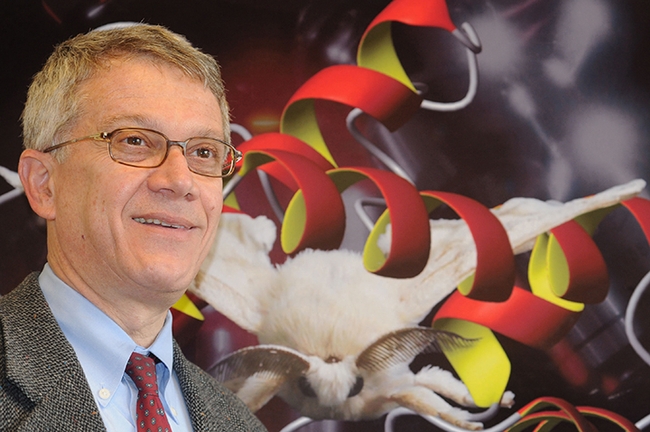
- Author: Kathy Keatley Garvey
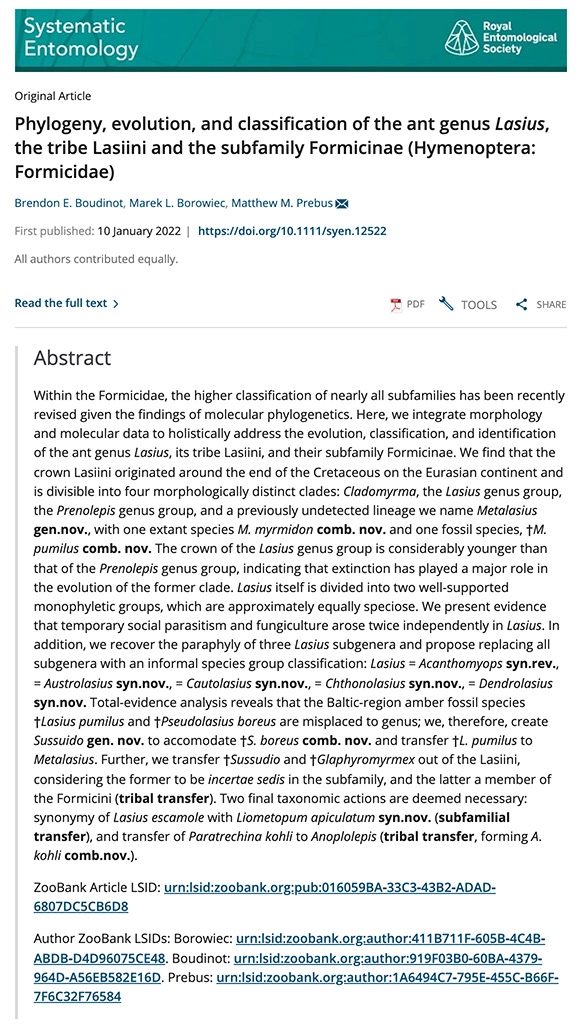
The ant world on Twitter is crawling with congratulatory comments and how "awesome" the work is. Wrote one: "Congratulations! Lasius is a familiar genus in Japan, so I will let the Japanese entomologists know about it."
The story behind the story? It all began in the Ward lab. "The Three Ant Men" are now scattered from Idaho to Arizona to Germany.
- Borowiec, who received his doctorate at UC Davis in 2016, is an assistant professor at the University of Idaho.
- Prebus, who received his doctorate at UC Davis in 2018, is a postdoctoral scholar at Arizona State University.
- Boudinot, who received his doctorate at UC Davis in 2020, is in Jena, Germany on a two-year Alexander von Humboldt Research Fellowship to research evolutionary and comparative anatomy.
"Within the Formicidae, the higher classification of nearly all subfamilies has been recently revised given the findings of molecular phylogenetics," the co-authors wrote in their abstract. "Here, we integrate morphology and molecular data to holistically address the evolution, classification, and identification of the ant genus Lasius, its tribe Lasiini, and their subfamily Formicinae. We find that the crown Lasiini originated around the end of the Cretaceous on the Eurasian continent and is divisible into four morphologically distinct clades: Cladomyrma, the Lasius genus group, the Prenolepis genus group, and a previously undetected lineage we name Metalasius gen.nov., with one extant species M. myrmidon comb. nov. and one fossil species, †M. pumilus comb. nov. " (See more.)
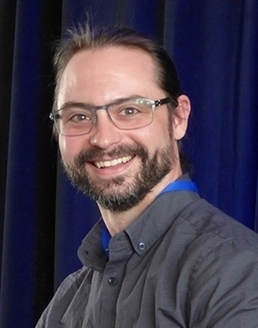
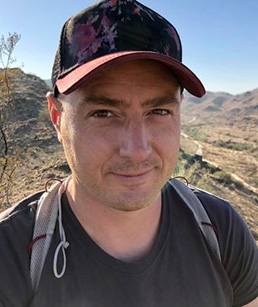
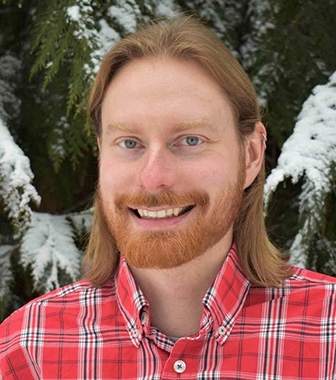
Looking back, Prebus and Borowiec said that they were both interested in Lasius atopus "due to its strange morphology and lack of phylogenetic data despite the amount of attention paid to the genus, and planned a collecting trip to the type locality in Mendocino County in 2013."
The collecting trip to Mendocino proved unsuccessful. "But because of Phil's extensive collections. we knew of a population of a closely related species in Gates Canyon near the city of Vacaville," Prebus said. This time the trio collected specimens from several colonies at Gates Canyon, which is located off Pleasants Valley Road.
"For all of us, this was a collaborative side project, so after the study was presented, submitted, and rejected, it took the back-burner while people finished their dissertations, got jobs, got married, had kids, and so on," Prebus recalled. "Speaking personally, the pandemic put quite a few of my postdoc projects on hold after the Arizona State University campus closed, but the small upside amongst the inundation of downsides was that I was able to focus on getting some long-haul projects into shape for publication, including the Lasius study. This involved a huge amount of reanalysis of data that we had already collected, but thankfully didn't require generating any new data."
"In my opinion, one of the really cool aspects of this study is the method of evaluating the placement of fossil taxa in the phylogeny of the subfamily Formicinae," Prebus shared. "Because DNA data aren't available for fossil taxa, the assignment of fossils to ranks higher than species relies on the interpretation of their morphology, and historically that interpretation has relied heavily on expert opinion--and all of the biases that said experts hold. By collecting morphological data from all extant and fossil taxa in our dataset, we were able to unite the DNA data--from extant taxa--and the morphological data--from extant and fossil species--and formalize fossil placement, and evaluate the uncertainty of those placements, in model-based analyses. I think that this study joins a growing trend in systematics in general, in which we are increasingly moving away from expert opinion toward approaches that are testable and repeatable."
Follow the myrmecologists on Twitter:
- Matthew Prebus at @mmprebus
- B. E. Boudinot at @BoudAnt1
- Marek Borowiec at @mareklborowiec
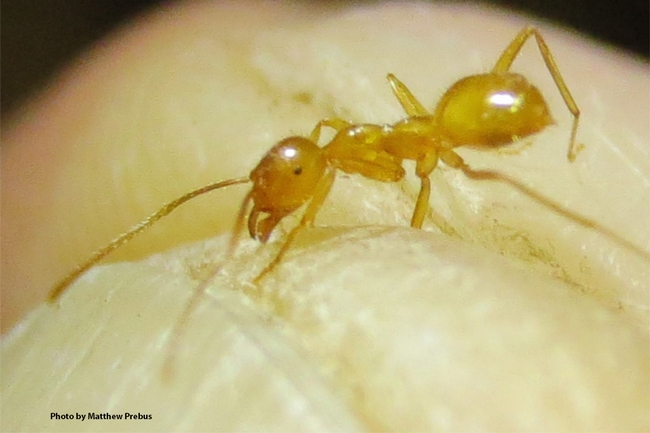
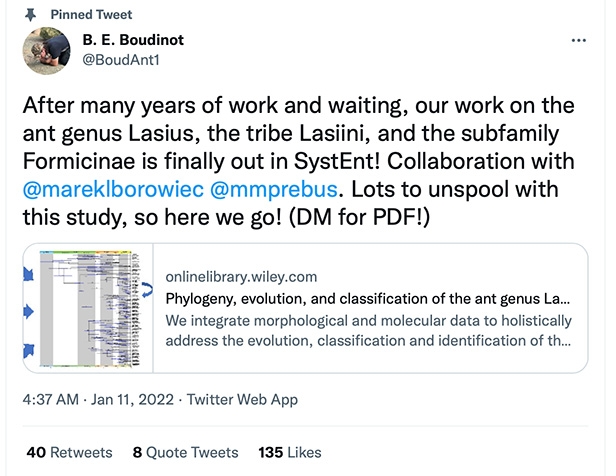
- Author: Kathy Keatley Garvey
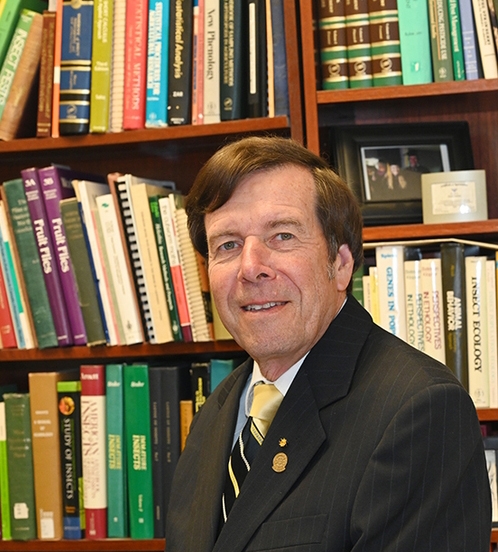
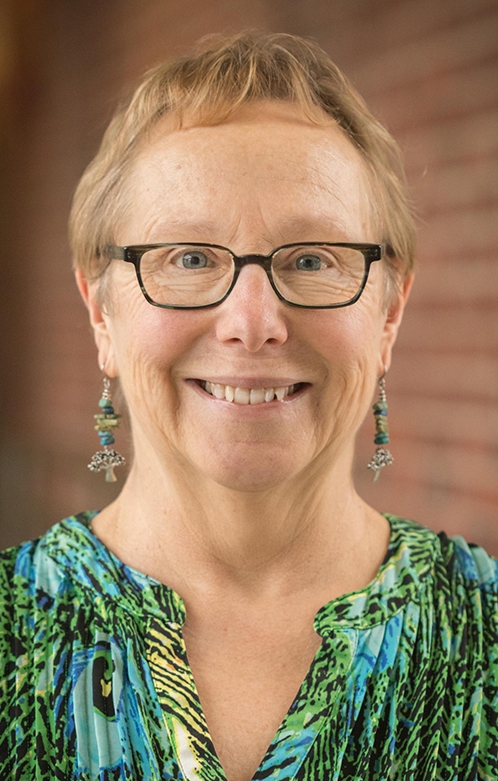
The hybrid meeting (both in-person and virtual) took place Oct. 31-Nov. 3 in Denver.
Several of the UC Davis highlights, as previously featured on the Department of Entomology and Nematology website:
- UC Davis distinguished professor Frank Zalom, integrated pest management (IPM) specialist and a past president of ESA, was celebrated as an Honorary Member of the ESA, an honor bestowed for his “long-term dedication and extraordinary contributions." (See more here.)
- UC Davis doctoral alumnus Kelli Hoover, a Pennsylvania State University professor internationally known for her research on invasive species, including the Asian longhorned beetle, gypsy moth and spotted lanternfly, was honored as a newly elected Fellow of ESA for her excellence in research. (See more here.)
- Danielle Rutkowski, doctoral candidate in the UC Davis Department of Entomology and Nematology, won a President's Prize in a graduate student competition for her presentation on "Fungicide Impacts on Bumble Bees are Mediated via Effects on Bee-Associated Fungi" in the category, Plant-Insect Ecosystems: Ecology 3." She studies with community ecologist Rachel Vannette, associate professor, and is also advised by community ecologist and professor Rick Karban. (See more here.)
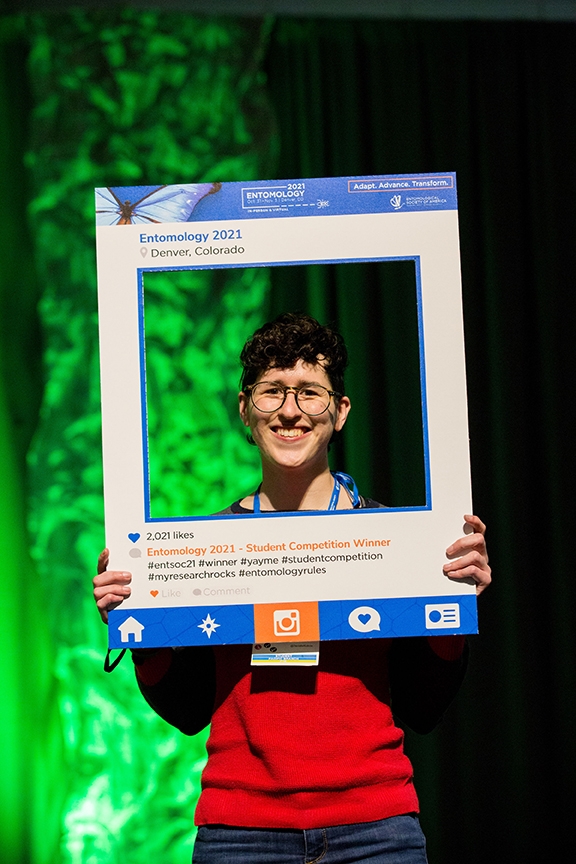 Doctoral candidate Danielle Rutkowski with her President's Prize. (Entomological Society of America/ Photography G)
Doctoral candidate Danielle Rutkowski with her President's Prize. (Entomological Society of America/ Photography G) - Maureen Page, with the lab of pollinator ecologist Neal Williams, professor, UC Davis Department of Entomology and Nematology, won the second-place award in a graduate student competition for her presentation on "Optimizing Pollinator-Friendly Plant Mixes to Simultaneously Support Wild and Managed Bees." She competed in the category, Plant-Insect Ecosystems: Pollinators. (See more here.)
- Kyle Lewald, with the College of Biological Sciences and the Integrated Genomics and Genetics Graduate Group, but a member of the lab of molecular geneticist and physiologist Joanna Chiu, professor and vice chair of the UC Davis Department of Entomology and Nematology, won second-place in a graduate student competition for his presentation on "Assembly of Highly Continguous Diploid Genome for the Agricultural Pest, Tuta absoluta." (See more here.)
At the ESA's annual meetings, students are offered the opportunity to present their research and win prizes. There are several components to the competition: 10-minute papers (oral), posters, and infographics. First-place winners receive a one-year free membership in ESA, a $75 cash prize, and a certificate. Second-winners score a one-year free membership in ESA and a certificate.
"Each year approximately 3,500 entomologists and other scientists gather to exchange scientific information," ESA says on hits website. "A program of symposia, conferences, submitted papers, and continuing education seminars provides attendees the opportunity to hear and present research results. The meeting also provides a chance to interact informally with peers and prospective employers."
ESA, founded in 1889 and headquartered in Annapolis, Md.,, is the world's largest organization serving the professional and scientific needs of entomologists and others in related disciplines. Its 7000 members are in educational institutions, health agencies, private industry, and government. Michelle Smith of Corteva Agriscience served as the 2021 president. The newly elected president is Jessica Ware, assistant curator of Invertebrate Zoology at the American Museum of Natural History.
Below are several images shared by Photography G of Denver at the ESA meeting. More images from the ESA meeting are on Flickr.

